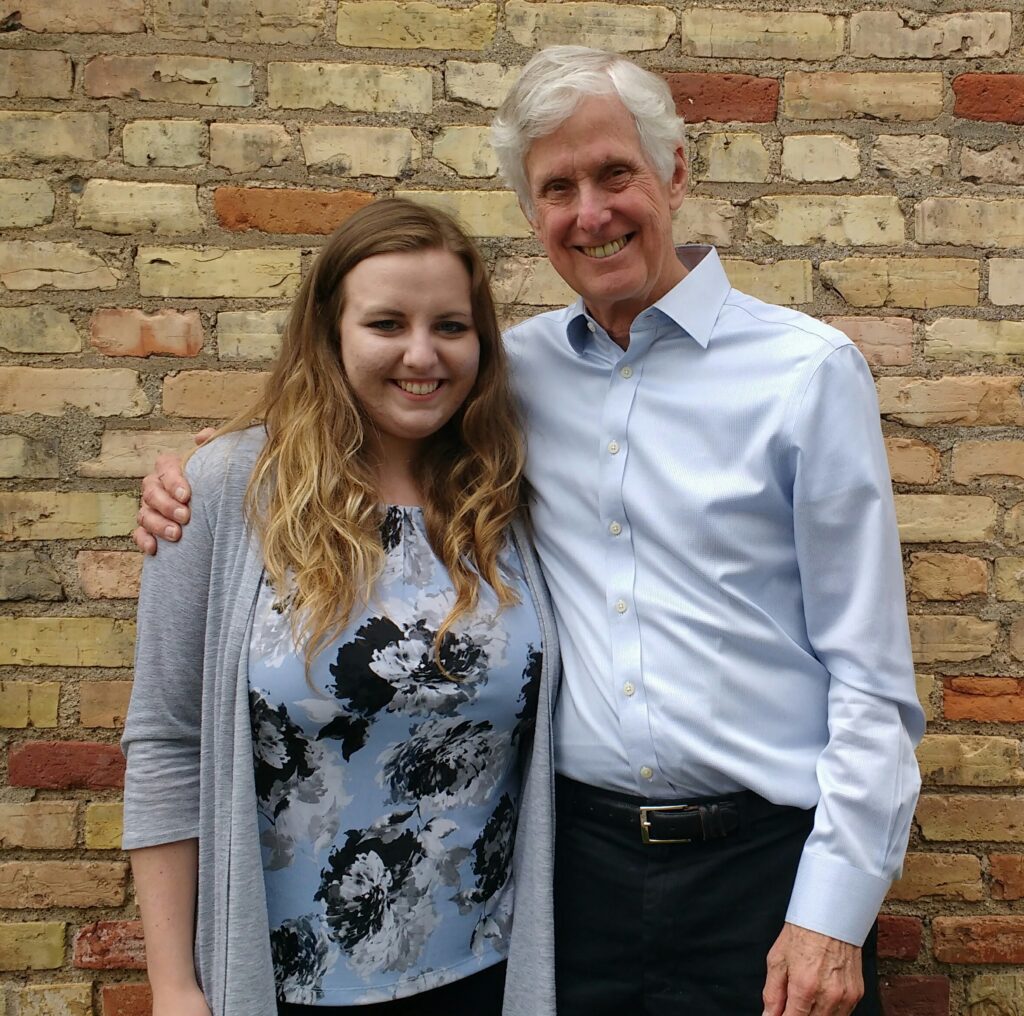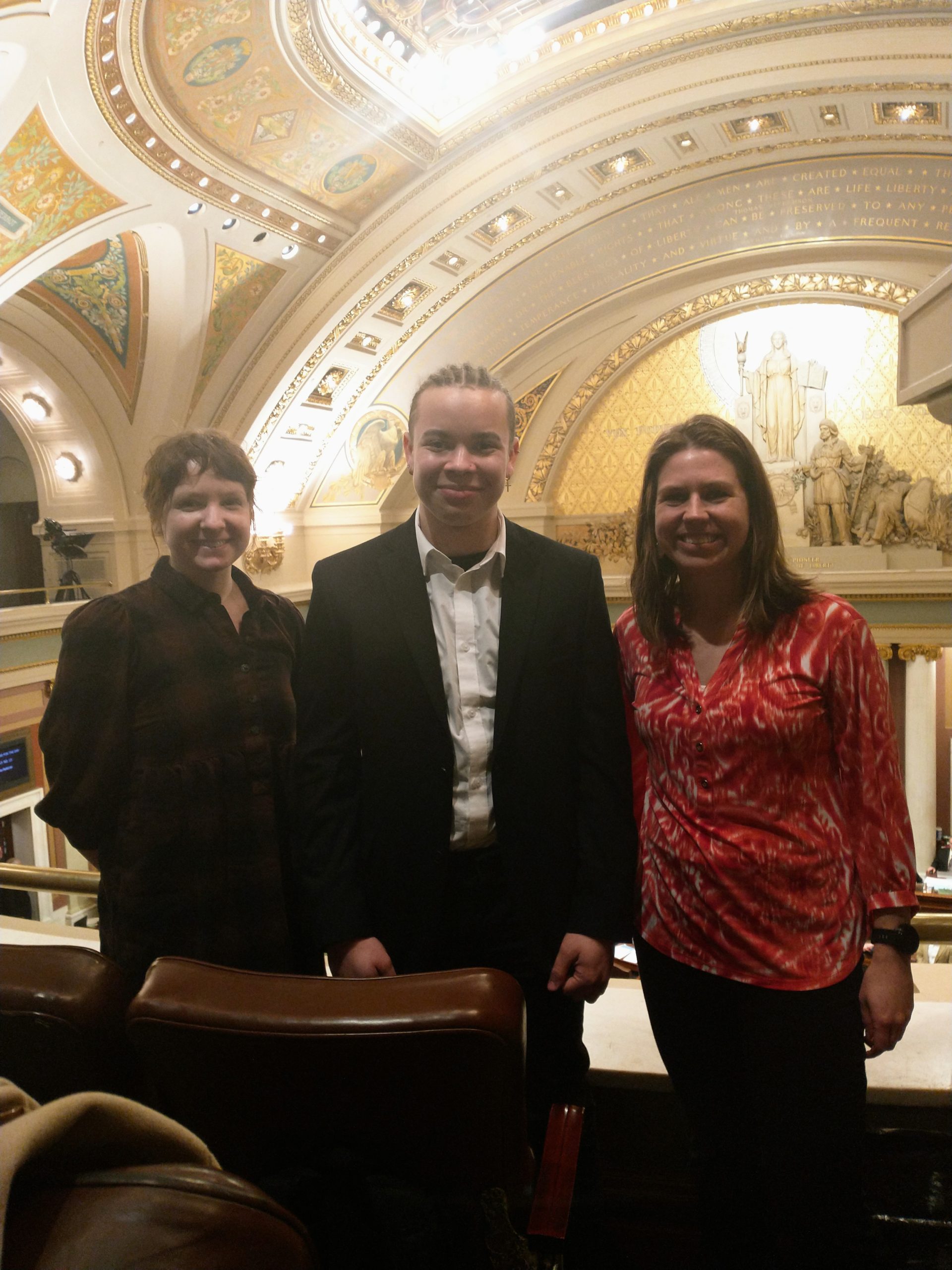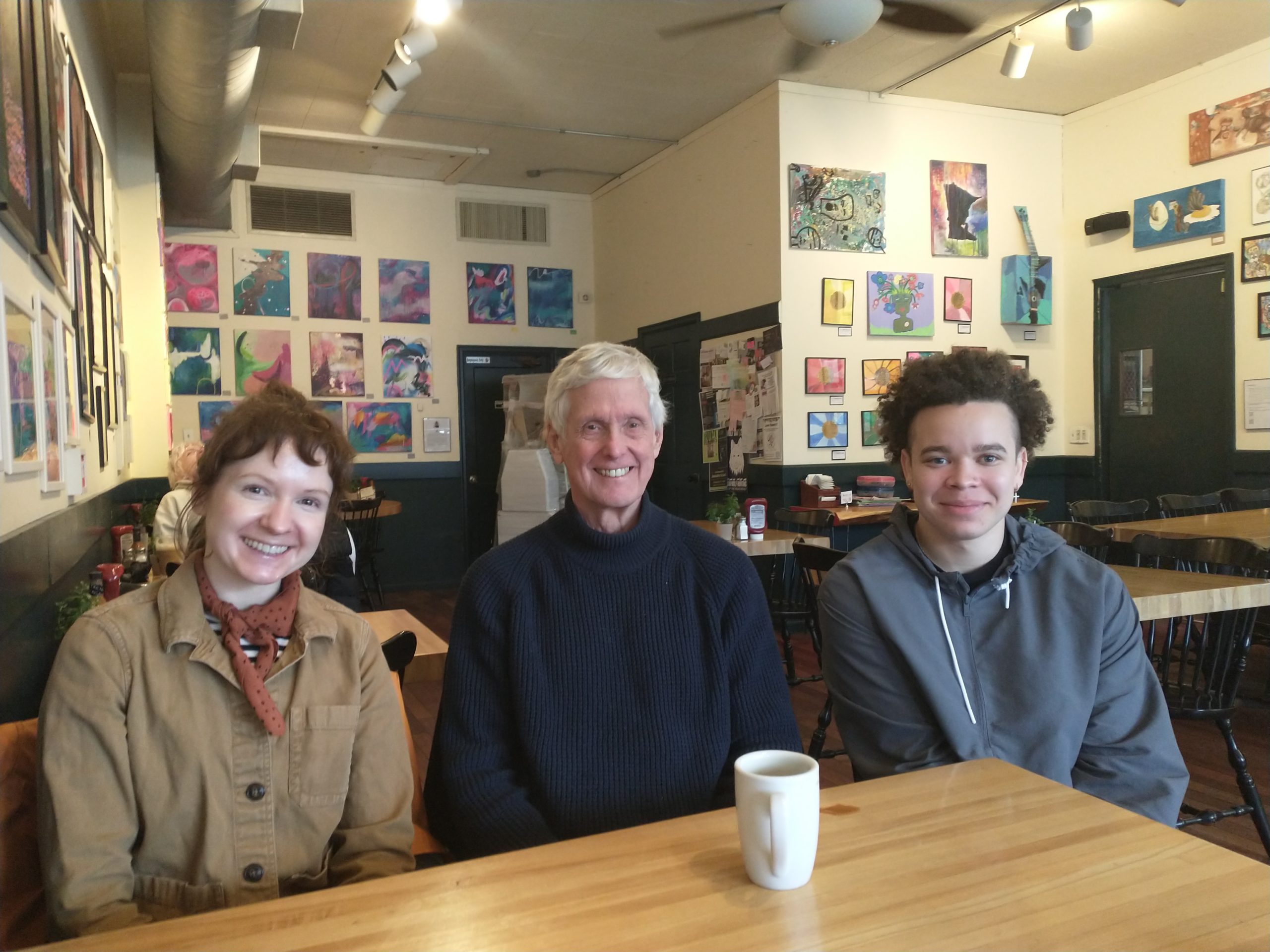By: Emma Klingler
Greetings! You may remember me from the blog post introducing me back in March. My tenure as the Todd Otis Public Policy Intern for Think Small is nearly over, and it seems unreal that I started here only a couple of months ago. In that time, I’ve attended coalition meetings, rallies, trainings, briefs, and legislative hearings. I’ve helped to draft communications for partners and legislators about session progress and awesome child care programs across the state. And I’ve had the opportunity to meet countless incredible early education advocates and hear about their passion for their work. Through all of this, I was able to immerse myself in the issue: access to affordable, high-quality child care for all Minnesota children.
I learned so much in such a short period of time that it has honestly been hard to process at times. The problem we are faced with—a child care workforce shortage that isn’t able to attract new workers, paired with skyrocketing rates for families—is an immense and complicated one. So, in reflecting on my experience at Think Small, here are just a few of the lessons I’ve learned which stand out, both in regards to the child care issue and the world of advocacy in general.
Child care is an equal rights issue. The disparities in our state are shocking, especially when it comes to education. In fact, Minnesota has the highest academic achievement gap in the nation. Knowing what I now do about the importance of a child’s first few years for developing a capacity to learn and succeed in school, it is clear that increasing access to child care is imperative to closing that gap. Access to high-quality child care is not just an equal rights issue for children, but for parents, too. When parents are unable to afford care for their children, they must stay home from work to provide that care themselves. This burden is disproportionately laid at the feet of women, resulting in a lifelong loss of earning potential and reproducing earning gaps between men and women. Having affordable child care options allows women to choose to maintain their careers while having the peace of mind that their children are cared for.
Child care is at the intersection of all domains of public interest. Quality child care is a matter of education, particularly because we know that crucial brain development happens in the years before a child enters kindergarten. But it is also a catalyst for so many other positive social outcomes. There is evidence that early education reduces the use of social services and the criminal justice system in later life, providing as much as a $16 return to society. School achievement is associated with higher incomes, which is in turn associated with better health and prosperity. The message of child care as it relates to the whole life of individuals needs to be spread so that stakeholders from other areas of public policy, such as health care and economic development, can come together and feel they have a place in the issue.
Developing integrative solutions should be the endgame. Since we understand that early education impacts so many aspects of well-being and social outcomes, it is important to find innovative solutions to the child care crisis which incorporate factors such as housing, health, higher education, and business. This could look like clinics sharing information about child care providers and financial support services with new parents, or like teaching businesses to be advocates for child care in their communities to support their workers and their own economic development. With relatively little public funding in comparison to other stages of education, we must look at community solutions which elevate the visibility of child care. Communities can demonstrate the impact of high-quality child care on the whole society, and perhaps elevate the political will to invest in families and children in their earliest years.
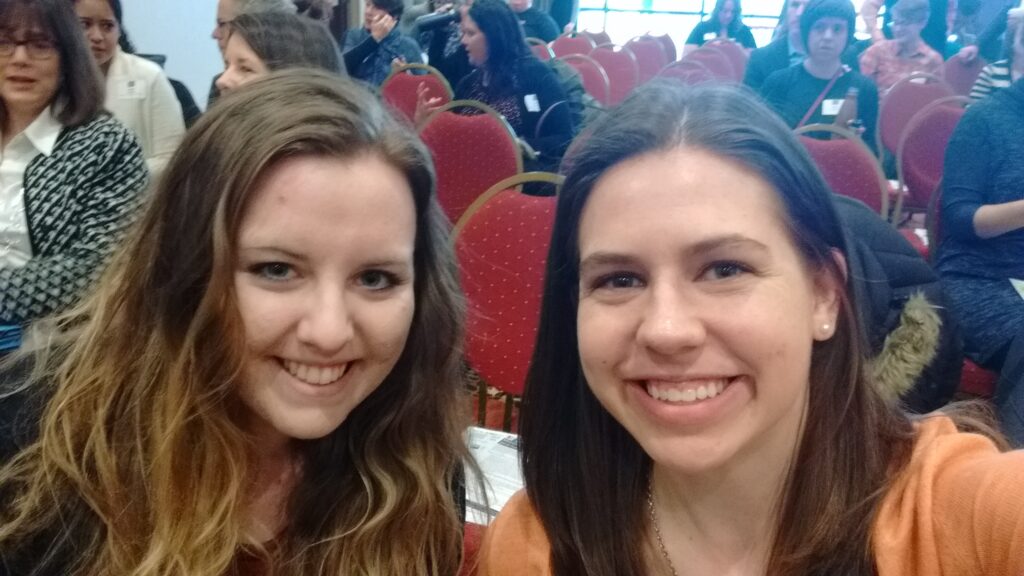
Emma with Policy and Advocacy Coordinator, Marie Huey during a MN Council of Non Profits Advocacy Session.
Cooperation across advocacy efforts is imperative. There are a handful of child care-related coalitions working on state-level solutions in Minnesota. In my time with Think Small, I’ve gotten to hear from Voices & Choices for Children, Minnesota’s Future, MinneMinds, Minnesota’s Head Start Coalition, and Kids Can’t Wait Coalition, among others. Each of these coalitions approach the child care issue from a particular angle, but they understand the importance of sharing their work with others and building awareness for the child care issue collectively. Because child care is facing a crisis in Minnesota, the changes needed to address the workforce shortage and high costs are immense and multi-faceted. Having a unified effort with many specialized voices seems like a strong strategy for making change.
We need to continue building relationships with providers. Child care providers are a key stakeholder, and have the capacity to be one of the most compelling voices for the issue. They more than anyone understand the challenges facing the child care workforce, and what is needed for providers to be able to develop their programs and stay in the business. Having intentional conversations with providers which center the importance of quality and measuring success while listening to the expertise they provide will help to develop relationships, which will in turn create a more unified, powerful voice to advocate for change.
Keep talking about it. When I applied for this position, I was interested in getting involved in education advocacy because I believe that reducing disparities starts with equal educational opportunities. But it wasn’t until I started reading up on the background of the child care issue in Minnesota and the country that I understood the unique, profound impact of education in years 0-5 on outcomes. It’s such a compelling argument, yet not one that everyone is familiar with. I heard from the mouths of providers during a training that they continue to combat the perceptions of their friends, neighbors, and even the parents they work with that child care is essentially babysitting. But it is clear, both from the research and the stories of participants and providers, that it is so much more than that. Stories like Nichole’s, about her son, Stephon; and Liss’s, about her daughter, Emma —these stories have the capacity to move people, and we need to continue to reach new audiences throughout the state to do just that.
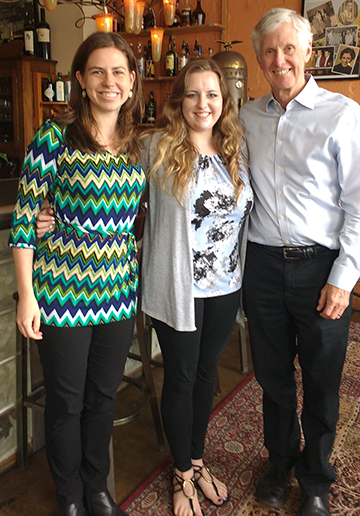 I’m so grateful to have had this opportunity to work with Think Small this legislative session. It was a privilege to be a part of spreading the message of accessible, high-quality child care to legislators and others. Hopefully, my small contribution helped in some way to advance the conversation. As I graduate and enter the workforce as a community health outreach worker, I will continue to pay close attention to the child care environment in my community, and perhaps generate my own integrative solutions.
I’m so grateful to have had this opportunity to work with Think Small this legislative session. It was a privilege to be a part of spreading the message of accessible, high-quality child care to legislators and others. Hopefully, my small contribution helped in some way to advance the conversation. As I graduate and enter the workforce as a community health outreach worker, I will continue to pay close attention to the child care environment in my community, and perhaps generate my own integrative solutions.
